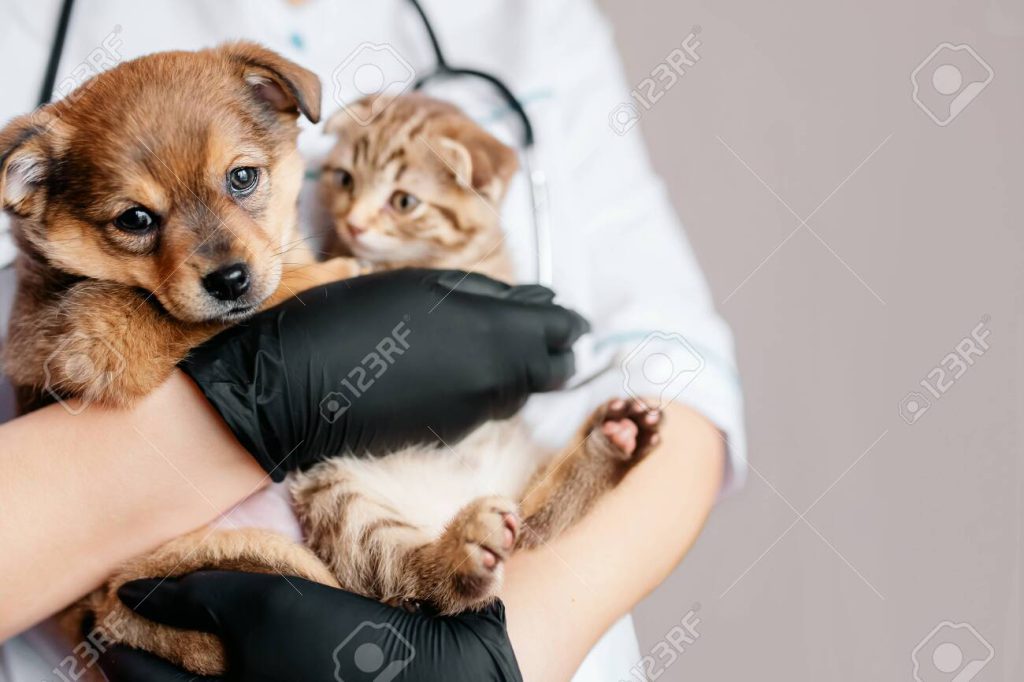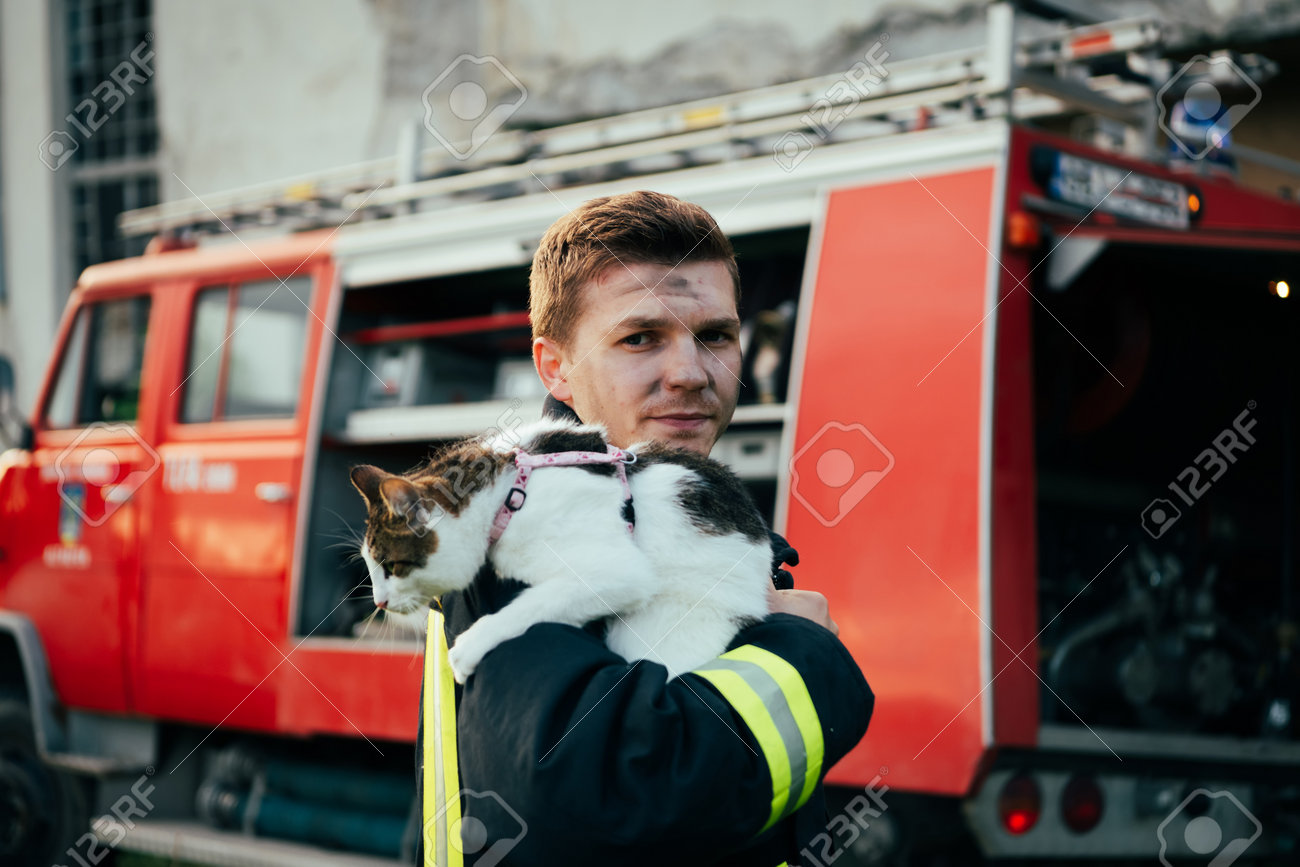Animal rescue services are organizations that work to save animals from suffering and cruelty. Unfortunately, due to a variety of factors, these organizations often face a number of different challenges. From dealing with limited resources to the emotional toll of saving animals, these services are often stretched thin. In this article, we will discuss the top five challenges faced by animal rescue services and how you can help them. We will discuss things such as providing financial support, helping with fundraising, and volunteering your time. By understanding these challenges and taking action, you can make a huge difference in the lives of animals in need.
A. What are Animal Rescue Services?
Animal rescue services are organizations dedicated to rescuing and rehabilitating animals in need. These organizations are typically run by volunteers who have a passion for helping animals. They take in animals from various sources, such as animal shelters, pet owners, or even from the wild. Once in their care, they provide medical care, food, shelter, and often times, a new home. Animal rescue services work hard to ensure that the animals they take in are provided with the best possible care and that they are given a chance to lead a happy and healthy life.
B. Overview of the Challenges Faced by Animal Rescue Services
Animal rescue services are a vital part of the animal welfare sector, providing care and a safe haven for animals of all shapes and sizes. Despite the invaluable work they do, there are a number of challenges animal rescue services face every day.
One of the biggest challenges faced by animal rescue services is the sheer number of animals in need of help. With so many homeless, neglected, and abused animals out there, it can be difficult to keep up with the demand for care and attention. This means that animal rescue services are often overwhelmed with requests and unable to provide all the help they would like.
Funding can also be a major challenge for animal rescue services. With limited budgets, they often struggle to cover the costs of caring for the animals in their care. This can lead to inadequate facilities, lack of staff and resources, and inadequate medical care.
In addition, animal rescue services often face resistance from the public. Many people are unaware of the challenges these services face, and are not always supportive of their work. This can lead to a lack of donations, volunteers, and support, making it difficult for them to continue their work.
The challenges faced by animal rescue services are numerous and varied, but they are essential to the welfare of animals. With the right support, these services can continue to provide the vital care and attention all animals deserve.
A. Causes of Overpopulation
Overpopulation is a growing issue in both the animal and human worlds. It is a serious problem that can lead to health, economic, and environmental issues. Animal rescue services are essential in helping to address the issue of overpopulation. They provide necessary services such as spaying and neutering, adoption, and fostering of animals. These services are effective in managing the population of animals and ensuring that no animal is left behind. Additionally, animal rescue services provide education and outreach to communities about the importance of responsible pet ownership, helping to reduce the number of homeless and stray animals. By doing so, animal rescue services play an important role in helping to reduce overpopulation.
B. Effects of Overpopulation
Overpopulation can be one of the most difficult challenges for animal rescue services. When there are more animals than shelters and resources can provide for, it can be difficult for these services to adequately care for all animals in need. This can lead to overcrowding in shelters, malnutrition, and the spread of diseases among animals. It can also lead to the euthanasia of some animals due to a lack of resources.
Additionally, overpopulation can lead to animals being abandoned or neglected, as people may not have the resources to care for them. This can cause animals to suffer, and can lead to an increase in stray animals. For animal rescue services, this can mean an increase in the number of animals that they must take in and care for.
Overpopulation can also have an impact on wildlife. When there are too many animals in a given area, it can disrupt the natural balance of the environment. This can lead to an increase in predators and other animals that may compete with native species for resources. This can be a challenge for animal rescue services, as they may need to intervene to help preserve wildlife.
Overall, overpopulation can have far-reaching effects for animal rescue services. It can lead to overcrowding, malnutrition, and the spread of diseases among animals. It can also lead to an increase in abandoned and neglected animals, as well as a disruption of the natural environment. For these reasons, it is important for animal rescue services to take steps to address the issue of overpopulation.
III. Challenge #2: Lack of Resources
Animal rescue services are essential for helping animals in need, however they often lack the necessary resources to do their jobs. This can be particularly true for those who specialize in rescuing animals in rural or remote areas. These services often rely on volunteers, donations, or grants to help cover the costs of rescuing animals. Unfortunately, these resources can be hard to come by, leaving animal rescue services struggling to provide the help that is needed. In addition, many of these services may not have access to veterinary care or other specialized services that are needed to ensure the safety and well-being of animals.
To help alleviate this issue, we need to do more to support animal rescue services. This could include raising awareness of the services available and providing donations to help fund their efforts. We can also encourage people to volunteer their time and resources to help support these services. By doing this, we can help ensure that animal rescue services have the resources they need to help animals in need.
A. Causes of Resource Shortage
Resource shortages can have a major impact on animal rescue services. Animals need food, shelter, and medical care to stay healthy and happy. When resources are scarce, it can be difficult to provide these basic needs for the animals in need. There are a variety of causes of resource shortages for animal rescue services.
One of the most common causes of resource shortages for animal rescue services is a lack of funding. Without adequate resources, the organization cannot provide the necessary care to keep the animals healthy. This can lead to overcrowding, poor nutrition, and inadequate veterinary care. Additionally, the cost of providing medical care, supplies, and food can quickly add up.
Another cause of resource shortages for animal rescue services is a lack of volunteers. Many animal rescue services rely heavily on volunteers to help care for the animals in their care. Without enough volunteers, animal rescue services can struggle to provide the necessary care to the animals in their care.
Finally, resource shortages can also be caused by a lack of shelters. When animal rescue services don’t have enough space to house the animals, they can quickly become overcrowded. This can lead to poor conditions for the animals, and can make it difficult for them to receive the care they need.
Resource shortages can have a major impact on animal rescue services. To help combat these shortages, organizations can look into ways to increase funding, recruit volunteers, and find additional shelters. By doing so, they can ensure that the animals in their care receive the necessary care and resources.
B. Effects of Resource Shortage
Resource shortages can have a devastating impact on animal rescue services. Without adequate resources, these organizations may struggle to provide the necessary care for animals in need. This could lead to overcrowding, inadequate food and medical supplies, and an overall decrease in the quality of care provided. In addition, the strain on resources may lead to longer wait times for animals to be rescued, increasing the risk of further injury or illness.
Additionally, resource shortages can result in a decrease in the number of volunteers available to help with animal rescue. Without enough volunteers, animal rescue services may be forced to reduce their efforts or even close entirely. This could lead to an increase in the number of homeless and neglected animals in need of assistance.
Finally, resource shortages can also have a financial impact on animal rescue services. Without adequate resources, services may struggle to cover their operating costs, leading to a decrease in donations and other forms of financial support. This could result in less funds available to help animals in need, further exacerbating the effects of the resource shortage.
Resource shortages can have a devastating impact on animal rescue services, leading to overcrowding, inadequate care, and financial difficulties. It is crucial for us to support these organizations and ensure that they have the resources they need to provide the best possible care for animals in need.
IV. Challenge #3: Overwhelming Number of Adoptions
The recent surge in animal adoptions has been a welcomed and exciting development in the animal rescue service. In the last few months, thousands of animals have found their forever homes, and it’s a testament to the hard work of animal shelters, volunteers, and animal-lovers everywhere. The overwhelming number of adoptions has been a challenge for many animal rescue services, as they have faced increased demands for resources and personnel. However, the surge in adoptions is a sign of hope, and it shows that more people are taking responsibility for the care of homeless animals. With more and more people turning to animal rescue services for their pet needs, it is clear that the future of animal rescue is looking brighter than ever.
A. Causes of Adoption Overload
Adoption overload is a growing problem in animal rescue services. With so many animals needing homes, animal shelters are unable to keep up with the demand for adoptions. As a result, more and more animals are being left in shelters with no one to care for them. The causes of adoption overload vary, but the most common causes are:
1. Overpopulation: With the number of animals in shelters increasing, the demand for adoptions also rises. This creates a backlog of animals waiting to be adopted.
2. Lack of Spay and Neuter Programs: When pet owners do not spay or neuter their animals, it leads to an increase in animal populations. This puts further strain on animal shelters, leading to adoption overload.
3. Poor Funding: Most animal rescue services are not adequately funded. As a result, they lack the necessary resources to provide for the animals in their care. This can lead to overcrowding and adoption overload.
4. Poor Education: Pet owners often lack the necessary knowledge to properly care for their animals. Without this education, pet owners are less likely to spay or neuter their animals, leading to the overpopulation of shelters.
Adoption overload is a serious issue that needs to be addressed. Animal rescue services need more funding and resources to help alleviate the strain of adoption overload. Additionally, pet owners need to be educated about the importance of spaying and neutering their animals. By taking these steps, animal rescue services can help reduce the number of animals in need of a home.
B. Effects of Adoption Overload
Adoption overload can be a serious issue for animal rescue services. It can lead to overcrowding in shelters, increased euthanasia rates, and a general lack of resources to care for the animals. Overcrowding can lead to disease, stress, and even death for animals in the shelters. It also makes it more difficult for the rescue to provide the resources and care necessary for the animals.
Euthanasia rates may also increase due to adoption overload. With overcrowding, the animals may not get the necessary care and attention they need. This can lead to a situation in which the rescue service has to make the difficult decision to euthanize certain animals in order to make room for new ones.
Finally, adoption overload can lead to a lack of resources. With more animals in the shelter, the cost of food, vet care, and other necessities can become overwhelming. This can put a strain on the rescue service’s budget and make it more difficult for them to provide the necessary care to the animals.
Adoption overload can be a serious problem for animal rescue services. It is important for those looking to adopt to be aware of the potential consequences of adoption overload and be sure to take steps to prevent it.
A. Causes of Poor Communication
Poor communication in the English language can be a major barrier to providing effective animal rescue services. There are a variety of factors that can contribute to poor communication, ranging from a lack of knowledge of the language to cultural differences and misunderstandings. Here we will explore some of the common causes of poor communication and how they can be addressed.
First, a lack of fluency in English can lead to miscommunication and confusion. If the rescuer does not understand the language, they may not be able to interpret the situation accurately or respond in an appropriate manner. To combat this, it’s important to ensure that everyone involved in the rescue is fluent in English or has access to a translator if needed.
Another common cause of poor communication is cultural differences. Even if both parties are fluent in English, there may be a lack of understanding of the cultural context of the situation. This can lead to confusion or misinterpretation of the communication. To address this, it’s important to be aware of cultural differences and to provide cultural sensitivity training to those involved in the rescue.
Finally, misunderstandings can also be caused by a lack of clarity in the communication. If the rescuer or the animal owner does not clearly explain the situation, then the other party may not be able to understand the exact problem or how to respond to it. To combat this, it’s important to make sure that everyone involved in the rescue is aware of the situation and that the language used is clear and direct.
Overall, poor communication in the English language can be a major barrier to providing effective animal rescue services. To address this issue, it’s important to ensure that everyone involved in the rescue is fluent in English or has access to a translator, to be aware of cultural differences, and to ensure that the language used is clear and direct.
B. Effects of Poor Communication
Poor communication in English can have a negative effect on Animal Rescue Services. Poor communication can lead to confusion and misunderstanding between staff members and volunteers, as well as between Animal Rescue Services and their clients. This can result in inefficient communication, which can lead to delays in responding to calls for help, or animals not being rescued in time. Poor communication can also lead to miscommunication between staff and volunteers, which can result in a lack of trust and a sense of frustration. Poor communication can also lead to a decrease in donations, as potential donors may not be able to understand the mission of the Animal Rescue Service. Ultimately, poor communication can lead to an overall decrease in the effectiveness of Animal Rescue Services.
C. Solutions
International Animal Rescue is an animal protection and conservation non-profit organisation that comes to the aid of suffering animals with hands-on rescue and rehabilitation and the protection of wildlife habitats. We provide a variety of services to help animals in need. We offer animal rescue, transportation, and medical care for all animals. We also offer spaying and neutering services, vaccinations, and microchipping. We provide information and resources to help people make informed decisions about animal adoption.
At International Animal Rescue, we understand the importance of giving animals a second chance at life. We strive to provide compassionate and humane care for all animals in need. We are dedicated to helping animals find a loving and safe home. Our goal is to save as many animals as possible.
VI. Challenge #5: Inadequate Funding
Inadequate funding for animal rescue services. This is an important issue that affects countless animals and the organizations that are dedicated to helping them. With inadequate funding, these organizations struggle to provide basic necessities such as food, shelter, and medical care for the animals in their care. Additionally, they often lack the resources to adequately advertise their cause, making it difficult to find volunteers and donors. This lack of resources can lead to the closure of these essential services, leaving animals in need without help.
It is important that we raise awareness of this issue and support animal rescue services with donations and volunteering. By doing so, we can ensure that these organizations have the resources they need to provide essential services to animals in need. Additionally, we can also help by spreading the word about animal rescue services to our friends and family, so that more people are made aware of the issue and are motivated to help. Together, we can make a difference and help provide a better life for animals in need.
A. Causes of Inadequate Funding
Inadequate funding can be a major obstacle for animal rescue services. Without enough money to cover operational costs, it can be difficult to care for the animals adequately and provide them with the resources they need. There are several causes of inadequate funding for animal rescue services, including a lack of donations, lack of government support, and a lack of public awareness.
Lack of Donations: Unfortunately, donations are often the primary source of funding for animal rescue services. Without enough donations to cover the costs of caring for the animals, it can be difficult to provide them with the necessary resources. Additionally, donations are often sporadic and unpredictable, making it difficult to plan for long-term operations.
Lack of Government Support: Government support for animal rescue services can be hard to come by, as many governments prioritize other issues. Without enough government funding, animal rescue services may struggle to cover operational costs.
Lack of Public Awareness: Public awareness is essential for animal rescue services to receive donations. Without enough people knowing about the organization and its cause, it can be difficult to generate donations. Additionally, increased public awareness is essential to create support for animal rescue services and to get government funding.
VII. How You Can Help?

Animal rescue services are a great way to help animals in need. Whether you’re a volunteer, a supporter, a foster parent, or an adopter, you can make a difference in the lives of animals that have been abandoned or neglected. Here are some ways you can help:
• Volunteer: Animal shelters always need volunteers to care for animals, clean cages, feed, and provide socialization.
• Donate: Monetary donations are always welcome and help with the costs of running the shelter.
• Foster: Fostering animals can be a great way to provide a temporary home to a needy animal.
• Adopt: Adopting an animal from a rescue is one of the best ways to give a homeless animal a forever home.
• Advocate: Spread the word about animal rescue services and help create awareness about the plight of homeless animals.
By supporting animal rescue services, you’ll help to ensure that animals in need receive the care and love that they deserve.
B. Volunteer Your Time
Volunteering your time is one of the best ways to help animals in need. Animal rescue services rely heavily on volunteers to provide the necessary care for rescued animals and aid in the rehabilitation process. Volunteering your time can include anything from walking dogs, to cleaning cages, to helping with fundraising events. It’s a great way to give back to the community and make a difference in the lives of animals in need. By volunteering your time, you can help to ensure that animals are cared for properly and given the chance to find their forever homes. So, if you’re looking for a way to make a difference and help animals in need, consider volunteering your time at your local animal rescue service.
C. Spread Awareness
Animal rescue services have become an important part of our society, providing a safe haven for animals in need of help. These services provide shelter, medical care, and rehabilitation for animals that have been abandoned, abused, or neglected. By raising awareness about animal rescue services, more people are becoming aware of the plight of these animals and are taking action to help them.
The first step to spreading awareness about animal rescue services is to educate the public about the importance of these services. Educating the public about animal welfare and the benefits of adopting from animal rescue services can help to increase the number of animals being rescued and adopted. Sharing stories of successful animal adoptions and highlighting the importance of spaying and neutering animals can help to spread the message.
It is also important to spread the word about the importance of volunteering at animal rescue services. Volunteers are essential for providing care and support for animals that have been rescued. Volunteers can help to feed, walk, and provide socialization for animals in need. They can also help to raise funds for animal rescue services, which will go towards medical care and rehabilitation.
Finally, it is important to share information about animal rescue services with local businesses and organizations. Businesses can offer donations or sponsor adoption events to help support the cause. Organizations can also offer donations and volunteer opportunities to help raise awareness. By spreading awareness about animal rescue services, more people will be encouraged to adopt from these services and help to save the lives of animals in need.









